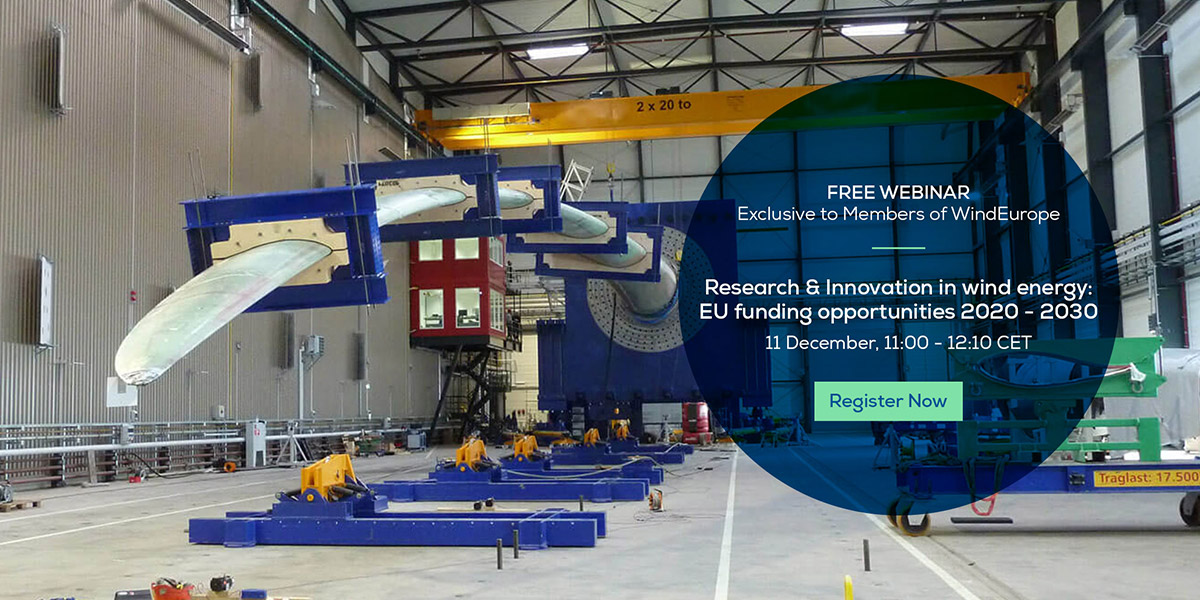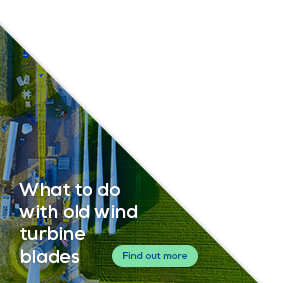WindEurope Bulletin
WindEurope Bulletin December 2018
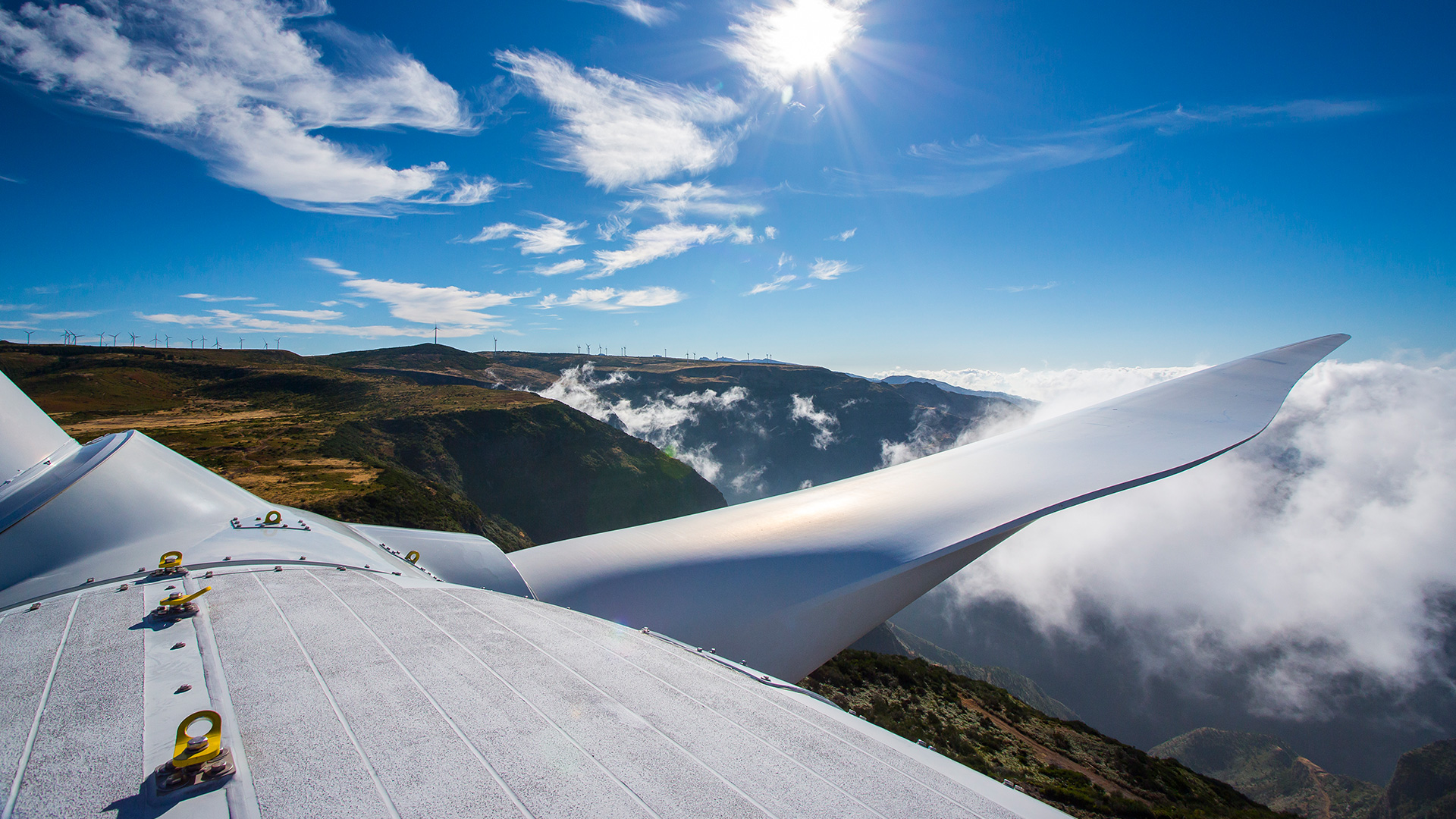
4 December 2018
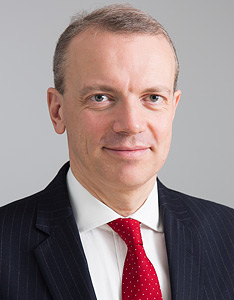
Giles Dickson
CEO Foreword
Dear WindEurope Member,
As we head towards the end of the year, it’s a crucial time on the energy policy front in Europe. Governments in every capital are now writing their National Energy and Climate Plans for 2030. They’ve got to send a first draft to the EU by the end of December. Sweden is the only country to have sent its plan in so far.
These National Plans have to detail the new renewables each country plans to build between now and 2030. Plus what they plan to do with their existing renewables that will reach the end of their life between now and then. So they will define the size and shape of the markets you’re operating in for the next decade.
Please spread the word that getting these Plans right is vital. Urge governments to include ambitious volumes for new renewables in the Plans and incentives to support repowering and lifetime extensions. Ask for clear visibility on the volumes and timing of wind auctions for at least the next five years and the budget allocated to them. And push for measures that will drive the electrification of transport and heating.
These National Plans will serve as investment brochures for the wind industry. We should not be afraid to tell Governments that the wind industry will be investing and creating jobs in countries that have the most ambitious Plans.
Once national governments have committed to their wind volumes for the next decade, it will of course be up to us to deliver on these. Retaining our technology leadership will be a key part of ensuring a strong European wind industry that can deliver the big volumes we want. To that end we’re organising a free webinar on December 11 on the EU-funding opportunities for Research and Innovation. Do join us for that.
Sticking with events, many of you joined us last month for the RE-Source 2018 conference in Amsterdam on corporate renewable Power Purchase Agreements (PPAs). It was an enormous success. More than 800 corporate buyers, renewable energy sellers and policy-makers came together to learn, network and explore possible B2B deals. The conference issued a declaration calling on governments to make it easier to sign PPAs. There’s massive demand among corporates to buy green power and the declaration sends a strong political signal. If you couldn’t make it, check out some of the event highlights.
Looking ahead, our annual Conference & Exhibition for 2019 will take place in Bilbao on 2-4 April. It’ll focus on both onshore and offshore wind. You’ll be aware that prospects for wind in Spain are looking bright again. They’re building more than 4 GW of onshore wind by 2020, and the Government then wants to build 2.5 GW wind a year up to 2030. They’re also beginning to look into offshore wind including floating. Spain has a vibrant wind supply chain employing 22,000 people, and Bilbao is a key hub for this and a fantastic example of how the wind industry supports local jobs, investment and growth. So it’s a great place for our annual event and a perfect time for us all to be in Spain. Registration will open in the New Year, but put the dates in your diary now.

Giles Dickson
Policy news
COP24 and EU 2050 decarbonisation strategy: wind energy is the most important technology towards net-zero emissions
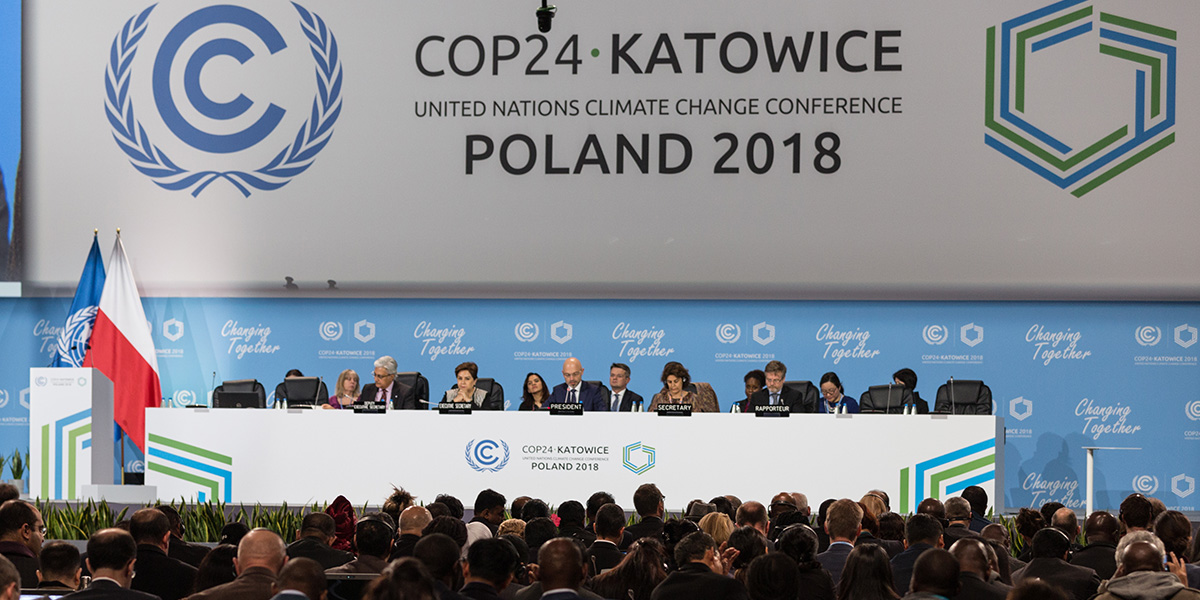
From Monday 3 to Friday 14 December, the 24th Conference of Parties (COP24) of the United Nations Framework Convention on Climate Change (UNFCCC) will take place in Katowice, Poland.
This COP is taking place under the Polish Presidency and will focus on three macro areas: technological development, just transition of coal regions, and the objective of climate neutrality. Like the last COP (COP23) in Bonn, we expect COP24 to continue discussing and laying down the rules of procedure for the implementation of the Paris Agreement.
At present, the Paris Agreement has been ratified by 179 parties, including the EU. Its aim is to limit global warming to “well below 2°C” as compared to “preindustrial levels.” Via their Nationally Determined Contributions (NDCs), signatory countries decide their own way how to reduce GHG emissions and to which extent they want to contribute.
Unfortunately, the sum of all NDCs leads to a global warming level much higher than 2°C. The IPCC report, published last month, warned the international community about the catastrophic and irreversible effects of global warming on climate, ecosystems and human activities caused by a global warming even slightly higher than 1.5 °C.
The European Commission has taken this important scientific report into account while publishing on 28 November its 2050 strategy for decarbonising the EU economy. This strategy foresees 8 different scenarios, all envisaging a drastic reduction of greenhouse gas emissions to 2050. The two most ambitious scenarios are those pursuing all efforts to stay below 1.5 °C global warming, and they foresee a net-zero GHG emission EU wide economy by 2050.
In the 2050 strategy, Wind energy clearly emerges as the dominant technology, representing between 51 and 56% of the power production in all decarbonisation scenarios. The net-zero scenarios foresee over 1,200 GW of installed wind power capacity in the EU by 2050.
WindEurope is happy to support these important messages in Katowice. In particular, in COP24 we will present the benefits of wind energy in a panel debate on coal regions in transitions and at the high-level EU Energy Day organised by the European Union on 11 December.
Member’s interview
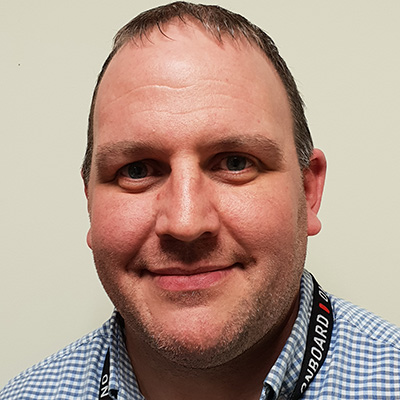
Interview with Paul Rutherford, Service Engineering Director at NSSLGlobal
Read the interview
Members’ success
Van Oord gets royal title as 150th birthday present
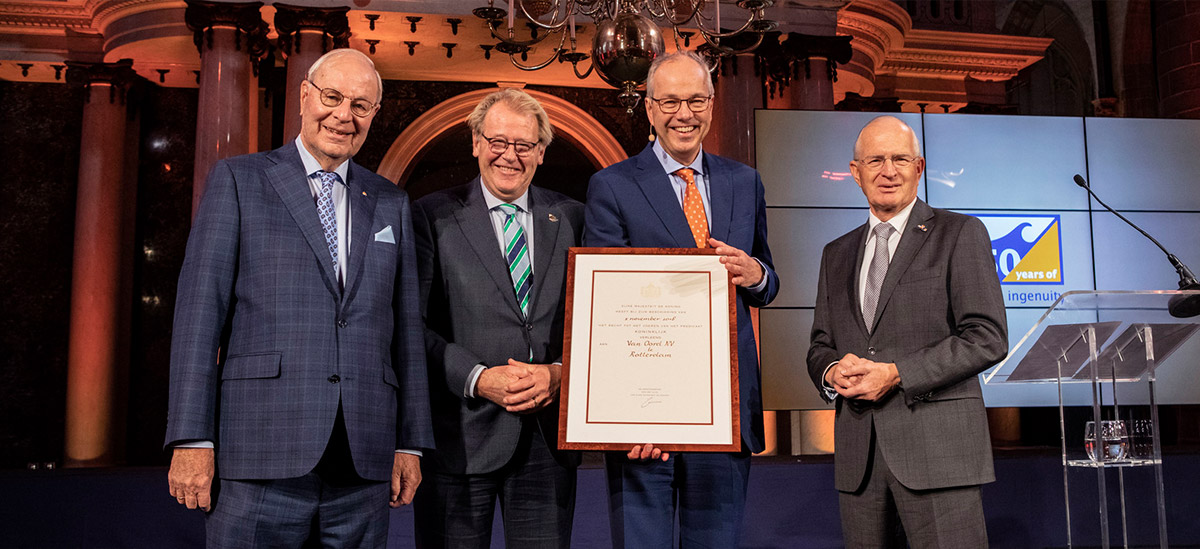
King Willem Alexander of the Netherlands confers Van Oord with royal designation: ‘Koninklijk’ (‘Royal’).
The Dutch King’s commissioner in the Province of Zuid-Holland, Jaap Smit, presented the certificate to Van Oord CEO Pieter van Oord during an international symposium in Rotterdam where 450 guests had gathered to mark the company’s 150th anniversary.
“It is an honour to have the right to use the royal designation,” said Van Oord. “It crowns the one hundred and fifty years of entrepreneurship, spirit and perseverance displayed by my predecessors and all our employees today.”
Founder Govert van Oord started out as an independent entrepreneur in 1868. Over the course of 150 years, Van Oord has grown to become an international dredging, oil & gas infrastructure and offshore wind contractor, supported by a series of acquisitions and mergers. The fifth generation of the Van Oord family is now active in the company.
Innovative iSpin technology selected to monitor the performance at Vattenfall’s European Offshore Wind Deployment Centre
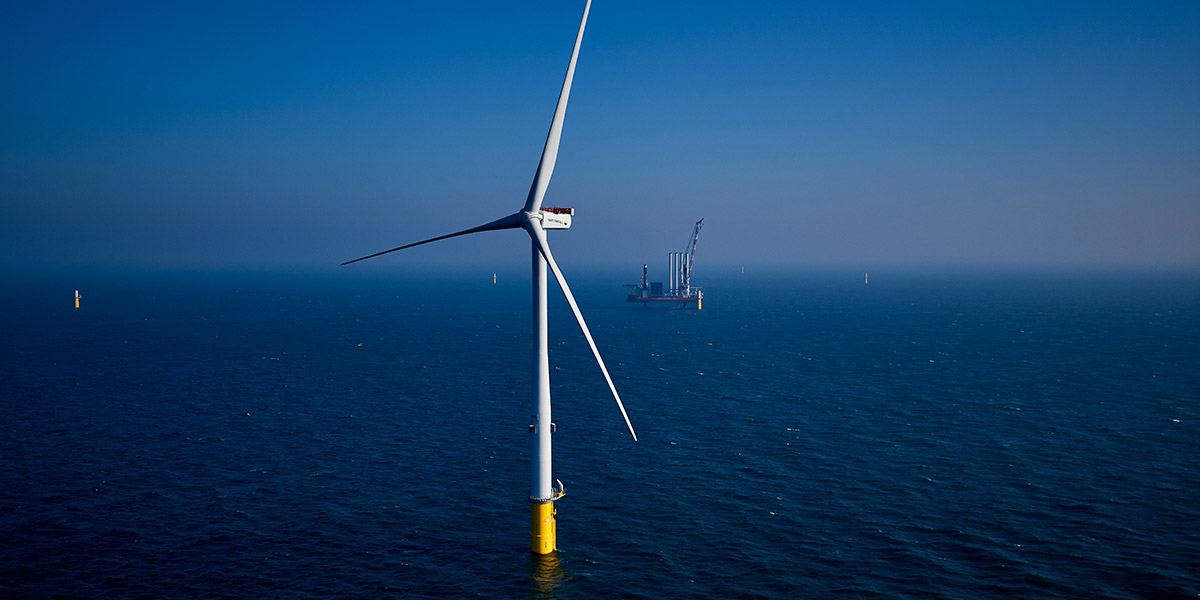
iSpin equipment is an enabler for load calculations and assessments as well as the optimization of the turbines in terms of wake effects.
Since commissioning the European Offshore Wind Deployment Centre (EOWDC) earlier this year, Vattenfall has been measuring important wind parameters using ROMO iSpin technology. The iSpin equipment was installed as part of the turbine supply contract, and is used to monitor the performance of each of the 11 enhanced MHI Vestas V164 8 MW class wind turbines.
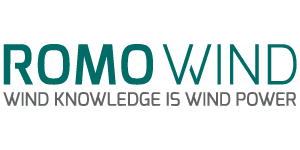
“With iSpin technology, Vattenfall will be able to detect deviations in the power curve, allowing them to remedy the problem and minimise energy losses.” Brian Sørensen, CEO Romo Wind adds.
With its advanced wind measurement capabilities including turbulence intensity, yaw misalignment and inflow angle measurements, in addition to wind speed and direction, the iSpin equipment is an enabler for load calculations and assessments as well as the optimisation of the turbines in terms of wake effects.
“The ability to capture value-adding data plays a significant role in the operational phase of a windfarm. The iSpin technology contributes to Vattenfall’s ability to actively control operational risks” Kevin Jones, Head of Aberdeen Bay, Vattenfall.
Events
Free Webinar: Supporting R&I excellence in wind energy: EU funding opportunities 2020 -2030
When: 11 December 2018, 10:30AM – 12:30pm CET
During this free webinar, representatives of the European Commission and the WindEurope team will guide you through future funding for wind energy research and innovation activities.
- Learn about the upcoming H2020 calls for proposals relevant to wind energy for the years 2019-2020
- Get insight on the Horizon Europe priorities, the next research funding programme for 2021-2027
- Find out how the ETS Innovation Fund will support innovation in wind energy.
WindEurope 2019 Conference & Exhibition in Bilbao

When: 2 – 4 April 2019
Where: Bilbao
WindEurope’s annual conference and exhibition will be taking place next April in Bilbao. With this year’s Event Ambassadors Iberdrola, Siemens Gamesa Renewable Energy and TPI, we will focus on both on- and offshore wind.
Now is a great time for the industry to gather in Spain. Spain’s vibrant supply chain already employs 22,000 people, and this is set to grow: more than 4 GW of onshore wind are planned by 2020, Spain is making new forays into offshore wind (including floating), and the government plans to build 2.5 GW wind a year up to 2030. Bilbao is a fantastic example of how the wind industry supports local jobs, investment and growth.
Registration for the conference will open in the New Year.
PLEASE NOTE: Over 60% of the exhibition space has already been sold.
Call for abstracts now open for Resource Assessment 2019
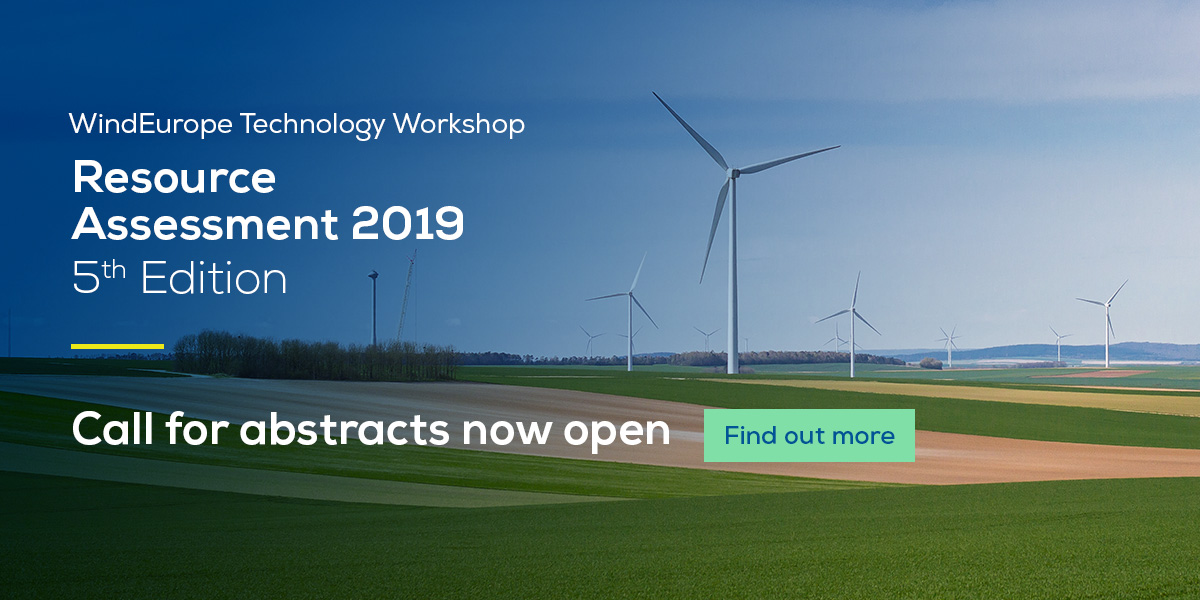
Submit your abstract for the 5th Edition of our Resource Assessment Technology Workshop.
Deadline for submissions: 7 January 2019. Selected authors will be notified by mid-February.
The Resource Assessment Workshop will focus on the following main topics:
Topic 1: reducing uncertainty in data analysis and processing
- Uncertainty quantification – in individual WRA steps and propagation of uncertainties through the workflow;
- Time series modelling. What stops us from wider implementation of time series calculations as opposed to frequency based?
Topic 2: reducing uncertainty in measurements using LiDARs
- LiDAR and site suitability? TI measurements with LIDARs.
- Shear adjustment for measurements campaigns including short masts and LIDARs?
- Acceptance, validation, correction strategies.
- Do we need to calibrate LiDARs against masts?
- Applications of scanning LiDARs: how can the wind industry best benefit from this technology?
Topic 3: improving simulations and modelling with regards to levels of uncertainty
- How to set a modelling hierarchy based on Uncertainty Quantification?
Topic 4: forecasting
- What are the barriers to improving the accuracy of forecasts?
- Do upwind wind speed measurements improve accuracy?
- For power trading we need to know the demand, where is the industry?
Topic 5: wakes
- Can wake steering improve production?
- Do we need to include blockage effects due to closely spaced turbines?
- Are turbines with large rotors on short towers underperforming?
WindEurope End of life Strategies Workshop, September 2019: Invitation to join programme committee
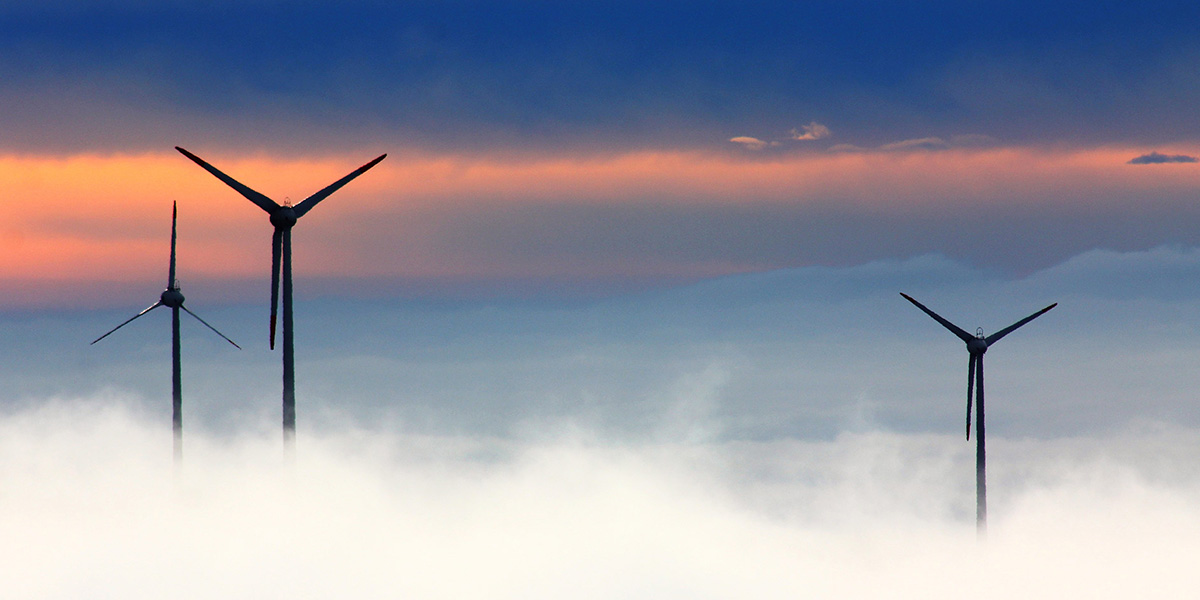 Contact Maliya
Contact Maliya
What we’re reading
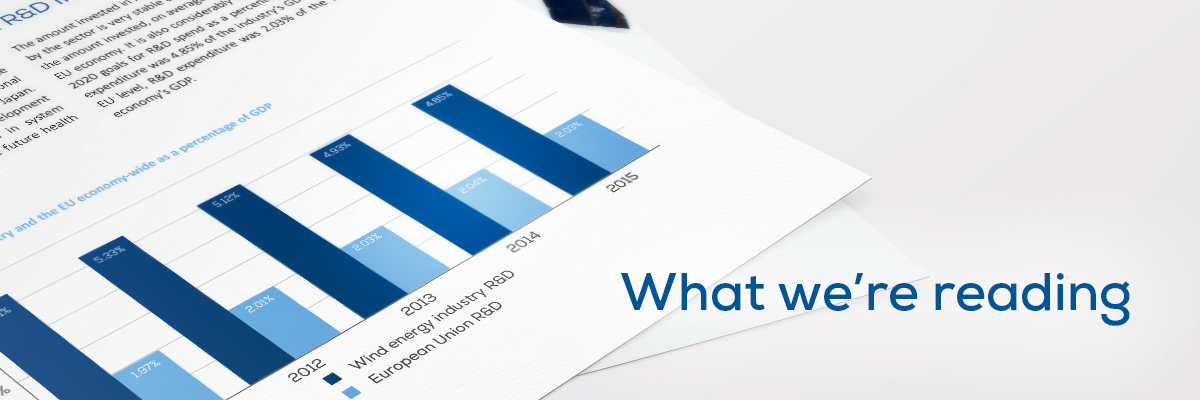
In this new section of the WindEurope Bulletin, we share some of the key wind energy publications of the past month.
- 2050 EU long-term strategy from the European Commission
- BP Technology Outlook from BP
- Cost of Capital Benefits of Revenue Stabilisation via Contract for Difference from Arup
- Cross-Border Renewables Cooperation from Agora Energiewende
- Hydrogen in a low-carbon economy from the UK CCC

